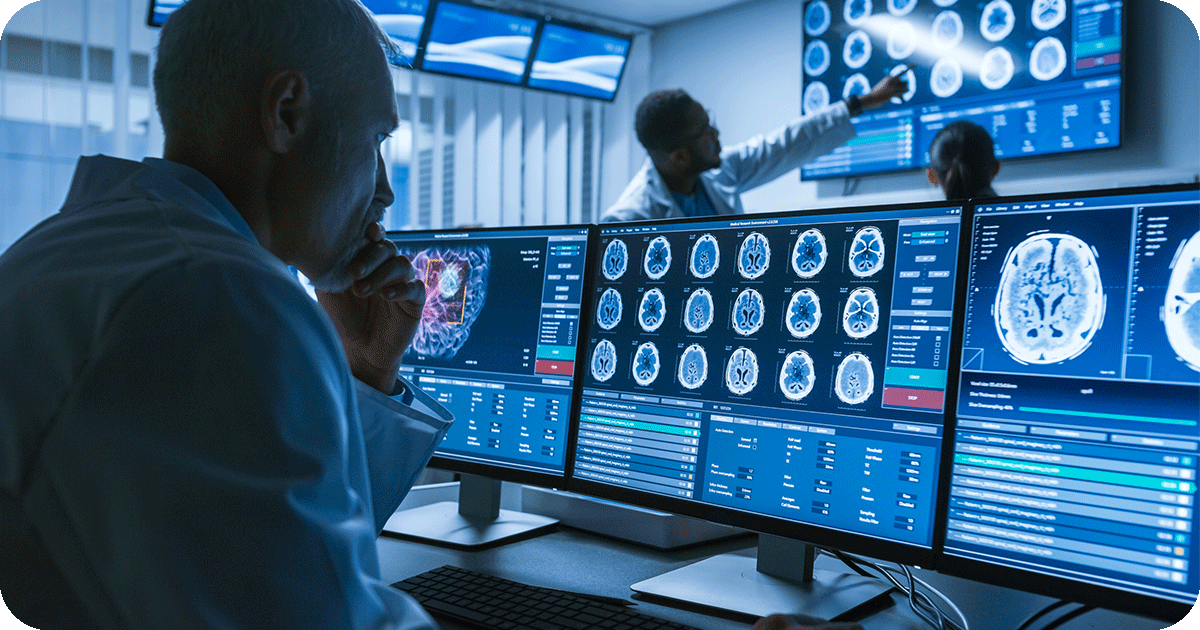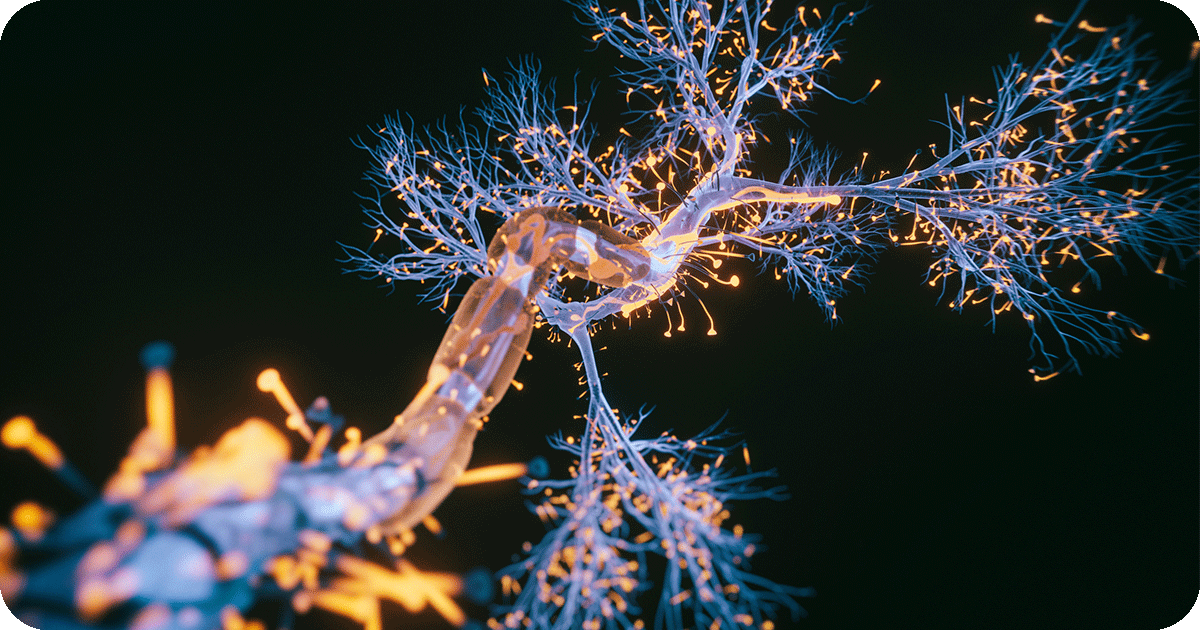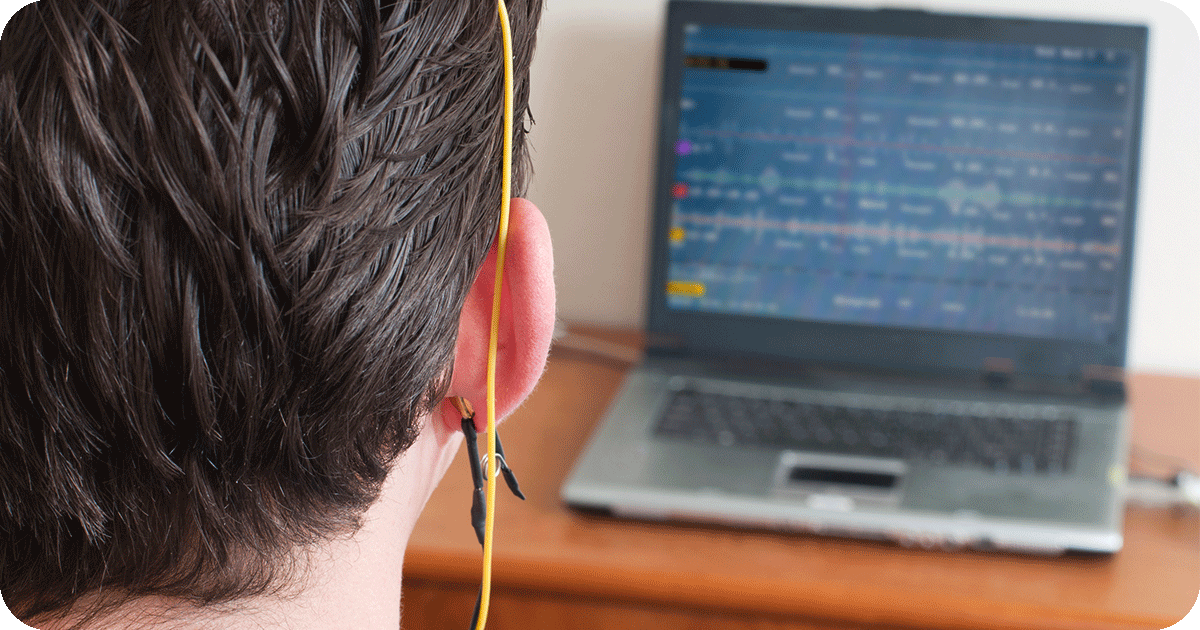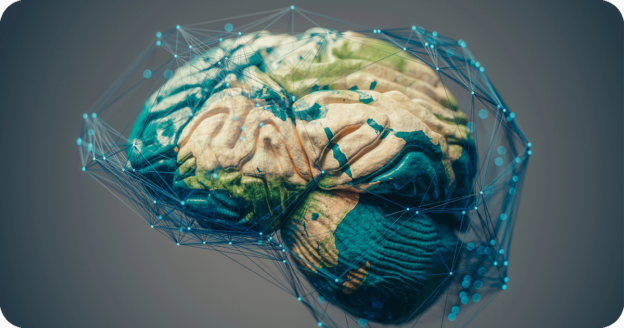The effects of substance use and substance use disorder (SUD) on the brain are complex and interweaving. SUD can severely impact brain function by limiting or mimicking current brain processes, and can even damage the neural cells of the brain. This can exacerbate or cause problems with memory, mental illness, and decision making. One of the primary areas affected is the dopamine pathway, the reward region of the brain.
How SUD Works in the Brain
The cells of the brain, or neurons, are grouped together in networks, and relay information between each other, creating a flow of information. This flow of information occurs when one neuron receives an electrochemical signal, and sends a corresponding signal to the next neuron. To do it, neurons must be excited by an action potential—an electrical stimuli—in the space adjacent to each neuron.
This stimulates the neuron to release a message in the form of a chemical neurotransmitter, which then reaches other neurons and attaches to their receptors. The space, or gap, between neurons is known as a synapse. Together, these synapses receive the electrical stimuli and convert it to a chemical neurotransmitter to form the path information moves along.
These firing neurons work together in the pursuit of specific goals—many of them bodily functions. In fact, all human function requires comprehensive use of these neurons. Unfortunately, substances like drugs and alcohol can force changes in certain networks of neurons, altering brain function either short-term, long-term, or on a permanent basis.
SUD interferes most with the stress and reward systems of the brain. When both systems are frequently activated, they can work together to create addictive cycles, releasing hormones that encourage substance use. Substances can also change the ways neurons send and process information, and may sometimes even activate neurons because of their similar structure to a naturally occurring neurotransmitter. This is the basics of substance addiction.
That’s why, with sustained substance use, the brain can adapt to the point where drug use is considered the normal state for the brain. When you stop providing the brain the chemicals it has become accustomed to, it may not only fail to adequately process information, but may produce symptoms of withdrawal, as well. Relapse often occurs because the brain is trying to reclaim that false “normalcy” in brain chemistry.
Which Brain Part Is Responsible for Addiction?

As mentioned, the primary neuron systems involved in addiction or SUD are the stress and reward systems. This reward system includes the dopamine pathway as one of its many components. The dopamine pathway is responsible for pleasurable responses to good things like exercise, time with friends, time in nature, and even listening to music, but can also become subject to a substance-induced high. Stress systems in the brain, such as the extended amygdala, respond to dangers and anxieties, but can also become activated by withdrawal symptoms.
Dopamine is one of the most common neurotransmitters functioning as a part of the reward region. Addictive substances all artificially increase the levels of dopamine in the brain by interfering with neurons’ ability to inhibit dopamine production. This produces the “high” or euphoric feelings commonly associated with substance use.
This causes a cycle of wanting the high caused by increasing the reward region’s dopamine and dealing with its withdrawal and the stress system’s production of the hormone cortisol. The cycle is the basis for what you feel as a strong urge to use a substance to get high, and negative repercussions (withdrawal) for depriving your brain of your substance of choice.
Can SUD Really Change the Brain?
Consistent interference with the brain’s reward and stress systems can cause several changes in various parts of the brain.
Basal Ganglia
The addiction pathway starts in the midbrain and stretches to the nucleus accumbens, which is part of the basal ganglia. This is known as the reward and motivation section of the brain. When the brain interacts with substances, it creates the sense of feeling high. After sustained use, the reward center becomes accustomed to the drug to feel positive emotions. Thus, feeling reward or pleasure without the substance becomes very difficult.
Extended Amygdala
The extended amygdala handles anxiety, danger, unease, and threat response. This part of the brain is also associated with withdrawal symptoms after the drug high wanes. Over time, sustained drug use creates a more sensitive extended amygdala.
The extended amygdala is also involved in reward, cognition, and associative learning. This area of the brain, along with the hippocampus, can be changed with substance use to create emotional memories related to drug or alcohol use experiences. These can result in triggers for relapse later. Part of treatment can be learning to sever the connections between triggers and substance use.
Prefrontal Cortex
Responsible for critical thinking, problem solving, and planning, this part of the brain also deals with compulsive actions. Substance use can impact this area twofold. It can cause a reduction in impulse control, which increases the likelihood that you will impulsively choose to resume substance use. This, in turn, further affects impulse control.
In a healthy brain, the prefrontal cortex and the amygdala work together. The amygdala senses a threat, and the prefrontal cortex assesses the threat to attenuate anxiety. When these systems don’t work properly, substance use can create fewer inhibition and greater withdrawal impacts.
What Is a Brain Mapping Assessment?
Brain mapping and understanding how your brain responds to substance use can be a valuable tool in SUD treatment. By utilizing this tool, you can learn what you need to do to restore your brain’s health and function.
How Brain Maps Are Created

Neurons are necessary for all our actions and responses, but neural networks are influenced by a variety of outside factors. Thoughts, behaviors, genetics, and surrounding environments all impact neurons, how they transmit information, and how effectively networks are created. Repeated use of neural networks, such as for constant activities like driving, walking, or texting, and instinctual activities like blinking, breathing, or your heartbeat, strengthens the neural pathways and solidifies their networks.
Brain maps are a result of those strengthened connections, and are created by our brain to be more efficient. By embedding brain maps, your brain functions more efficiently for repeated actions. Brain maps improve how you speak, think, and act during those actions.
Why Brain Maps Are Important
Without the efficiency of brain maps, simple repeated activities would take far longer as your brain re-remembers how to complete each action. Embedded brain maps allow habits to form, triggered by specific sounds, smells, sights, touches, or emotions. In this way, brain maps allow reactions to triggers to occur almost instantly.
Trauma to the brain causes these neural networks to be altered in the parts of the brain affected. Whether the cause is post-traumatic stress disorder, a brain injury, or a substance use disorder, the brain maps in the injured area of the brain will be impacted. Worse, repeated substance use creates new brain maps that make it natural for you to respond to stressors or triggers with substance use.
How to Change Brain Maps
Altering brain maps can be useful, particularly for those who want to break harmful or addictive habits and behaviors. However, this is a difficult process, and relies on many factors about the brain map, as well as your willingness to change it. Brain maps that have been in use longer are harder to change, as are brain maps that interconnect with many other neural networks and brain maps.
Changing a brain map requires building an understanding of the effect of certain triggers and finding a way to alter them, ignore them, or create new ones. Another important factor is ensuring the overall health of your brain with good nutrition, sleep, and exercise. Rewiring and changing your brain is a difficult process, and healing the damage caused by substance use can be complex, hard work.
What Is Neurofeedback?
In order to change brain maps, you must become aware of the brain maps that need to be changed. This is where neurofeedback comes in. Expert care in neurofeedback therapy, or EEG biofeedback, can help analyze your existing neural networks and maps so you can begin correcting and healing them.
Neurofeedback works by recording brain wave readings with monitoring devices to collect information about the brain. This brain wave data creates visible brain maps, which can be read by an expert in neurofeedback to determine which sections of the brain and their corresponding brain maps have become altered by substance use or brain trauma.
Is Neurofeedback Effective For Addiction?
For a person struggling with SUD, neurofeedback can facilitate understanding of which neural networks and pathways have been altered. Gaining an awareness of where the damage in the brain is occurring can enable you to seek straightforward treatment.
Neurofeedback is noninvasive and can help with many other neurological conditions like insomnia, PTSD, anxiety, Parkinson’s disease, strokes, and movement disorders. For this reason, neurofeedback can also help with dual diagnosis, by assisting with treatment of both an individual’s mental illness and SUD. Neurofeedback also works well when combined with traditional behavioral therapies.
Once the irregular parts of the brain are identified, treatment to repair and restore them can begin. Neurofeedback therapy, or neurotherapy, requires multiple sessions to monitor the changes and assess potential improvement in brain wave activity. Effective neurofeedback means that brain wave patterns become more normal and healthy.
Neurotherapy and Brain Mapping as Treatment To Help You

If you or a loved one is dealing with a substance use disorder, the best—and most difficult—thing you can do is seek treatment. Then, you can work with SUD experts to build a support system, engage in therapy, and do the work towards recovery that will help you regain control over your life.
It can be difficult to pinpoint the causes of substance use and relapse, but being able to do so could boost your journey to recovery and help you gain control over your response to your triggers. Whether your brain has been impacted by physical trauma, mental health disorders, traumatic events, substance use disorder, or even all of the above, brain mapping could help you discover your most effective path to recovery. By improving the function of your brain, treating the problem at its source, you can improve the quality of your life, relationships, and mental health.

